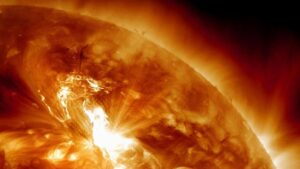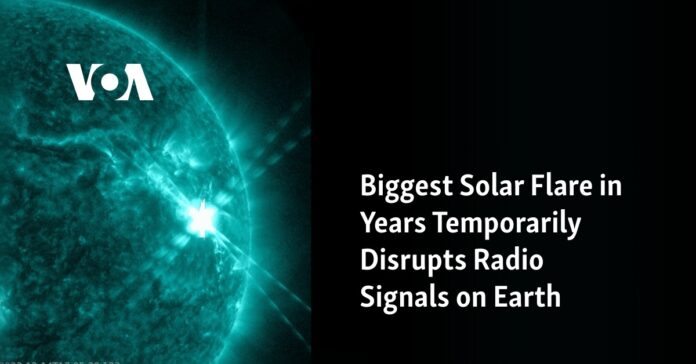Earth’s radio communications are momentarily disrupted by the largest solar flare in six years. The largest solar flare to hit Earth in years was photographed by a NASA telescope, briefly disrupting radio communications.
On Thursday, the sun released a big radio burst along with the enormous flare, which caused radio interference to be felt for two hours in parts of the US and other bright regions of the planet.
It was the largest flare since 2017, according to scientists at the National Oceanic and Atmospheric Administration, and the radio burst was widespread, hitting even higher frequencies.
According to Shawn Dahl of NOAA’s Space Weather Prediction Center, the combination produced one of the biggest solar radio events ever observed on Friday.
The space weather forecasting center said that several pilots reported communication interruptions that affected people all around the country.
Researchers are currently keeping an eye on this sunspot region and looking for signs of a potential coronal mass ejection—a solar plasma explosion that could be aimed toward Earth.
According to Dahl, this would cause a geomagnetic storm, which might then interfere with high-frequency radio signals at higher latitudes and cause auroras, or northern lights, in the next several days.
The sun’s far northwest region was the site of the outburst. The action was seen in intense ultraviolet light by NASA’s Solar Dynamics Observatory, which captured the massive energy spike as a brilliant flash.
The spacecraft was launched in 2010 and is currently orbiting Earth at a very high altitude, continuously observing the sun.
The sun is almost at the end of its about 11-year solar cycle. It is estimated that sunspot activity will peak around 2025.


































